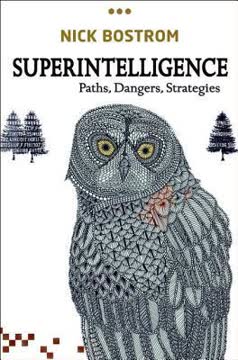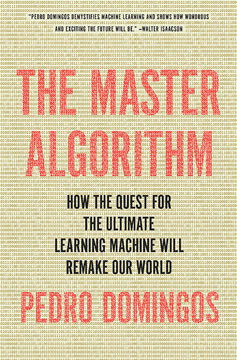मुख्य निष्कर्ष
दूसरी मशीन युग हमारे अर्थव्यवस्था और समाज को बदल रहा है
"हमारी पीढ़ी को इतिहास के दो सबसे अद्भुत घटनाओं का अनुभव करने का सौभाग्य मिलने वाला है: सच्ची मशीन बुद्धिमत्ता का निर्माण और सभी मनुष्यों का एक सामान्य डिजिटल नेटवर्क के माध्यम से जुड़ना, जो ग्रह की अर्थव्यवस्था को बदल देगा।"
गहरा परिवर्तन हो रहा है। हम एक दूसरी मशीन युग में प्रवेश कर रहे हैं, जो औद्योगिक क्रांति के समान महत्वपूर्ण है। जबकि पहले मशीन युग में भौतिक सीमाओं को पार करने के लिए भाप शक्ति और बिजली का उपयोग किया गया, इस नए युग की विशेषता डिजिटल तकनीकों द्वारा हमारे मन की सीमाओं को पार करना है।
तेज़ी से बढ़ता परिवर्तन। तकनीकी प्रगति की गति तेजी से बढ़ रही है:
- स्वचालित कारें कुछ वर्षों में असंभव से वास्तविकता में बदल गई हैं
- कंप्यूटर अब मानव भाषण को समझने और प्रतिक्रिया देने में सक्षम हैं
- रोबोट लगातार सक्षम और मानव जैसे होते जा रहे हैं
- आईबीएम के वॉटसन जैसे कृत्रिम बुद्धिमत्ता प्रणाली जटिल कार्यों में मनुष्यों से बेहतर प्रदर्शन कर रही हैं
यह तकनीकी क्रांति हमारे अर्थव्यवस्था और समाज के हर पहलू को फिर से आकार दे रही है, कि हम कैसे काम करते हैं, संवाद करते हैं, सीखते हैं और रचनात्मकता करते हैं। इसके परिणाम गहरे और दूरगामी हैं।
डिजिटल तकनीकें गुणात्मक, डिजिटल और संयोजक हैं
"हमारी डिजिटल दुनिया की घनत्व और जटिलता इसके साथ जोखिम लाती है।"
गुणात्मक वृद्धि। मूर का नियम - हर दो साल में कंप्यूटिंग शक्ति का दोगुना होना - अभी भी सही है। डिजिटल तकनीकों में यह गुणात्मक सुधार ऐसी क्षमताओं की ओर ले जाता है जो लगभग जादुई लग सकती हैं।
सब कुछ का डिजिटलीकरण। जैसे-जैसे हमारी दुनिया डिजिटलीकरण और जुड़ाव की ओर बढ़ रही है, हम डेटा और डिजिटल सामग्री के विस्फोट को देख रहे हैं:
- प्रतिदिन 300 अरब से अधिक ईमेल भेजे जाते हैं
- प्रतिदिन 500 मिलियन ट्वीट्स
- प्रतिदिन 4 बिलियन यूट्यूब वीडियो दृश्य
संयोजक नवाचार। डिजिटल तकनीकों को नए तरीकों से मिलाया और मिलाया जा सकता है, जिससे तेजी से नवाचार होता है। प्रमुख उदाहरण:
- स्मार्टफोन कंप्यूटिंग, जीपीएस, कैमरे, सेंसर और अधिक को जोड़ते हैं
- उबर और एयरबीएनबी जैसे साझा अर्थव्यवस्था प्लेटफार्म डिजिटल नेटवर्क का लाभ उठाते हैं
- 3डी प्रिंटिंग डिजिटल डिज़ाइन को नए निर्माण तकनीकों के साथ जोड़ती है
यह संयोजक स्वभाव नवाचार की गति को तेज करता है और अप्रत्याशित सफलताओं की ओर ले जाता है।
कृत्रिम बुद्धिमत्ता और वैश्विक जुड़ाव खेल बदलने वाले हैं
"जब 'विजेता सब कुछ ले जाता है' बाजार अधिक महत्वपूर्ण हो जाते हैं, तो आय असमानता बढ़ेगी क्योंकि शीर्ष पर वेतन मध्य में वेतन से दूर खींचता है।"
एआई क्रांति। कृत्रिम बुद्धिमत्ता तेजी से प्रगति कर रही है, मशीनें अब जटिल संज्ञानात्मक कार्य करने में सक्षम हैं:
- छवि और भाषण पहचान
- प्राकृतिक भाषा प्रसंस्करण
- जटिल समस्या समाधान और निर्णय लेना
इसका स्वचालन और भविष्य के काम पर गहरा प्रभाव है।
वैश्विक डिजिटल नेटवर्क। इंटरनेट और मोबाइल तकनीकों ने वैश्विक स्तर पर अरबों लोगों को जोड़ा है:
- विश्वभर में 4 अरब से अधिक इंटरनेट उपयोगकर्ता
- 5 अरब मोबाइल फोन उपयोगकर्ता
- तात्कालिक वैश्विक संचार और जानकारी साझा करना
नए अवसर। एआई और जुड़ाव का यह संयोजन विशाल अवसर पैदा करता है:
- वैश्विक सहयोग और नवाचार
- अरबों के लिए ज्ञान और शिक्षा तक पहुंच
- नए व्यापार मॉडल और आर्थिक पैटर्न
लेकिन यह नौकरी विस्थापन और डिजिटल अर्थव्यवस्था में विजेता सब कुछ ले जाने की गतियों जैसी चुनौतियाँ भी लाता है।
प्रौद्योगिकी अर्थव्यवस्था में समृद्धि और फैलाव दोनों पैदा करती है
"जीडीपी और उत्पादकता वृद्धि महत्वपूर्ण हैं, लेकिन ये एक अंत के लिए साधन हैं, अपने आप में अंत नहीं।"
बढ़ती समृद्धि। डिजिटल तकनीकें विशाल आर्थिक मूल्य पैदा कर रही हैं और हमारे जीवन की गुणवत्ता में सुधार कर रही हैं:
- अधिक सस्ती और उच्च गुणवत्ता वाले सामान और सेवाएँ
- नए उत्पाद और अनुभव जो पहले कभी कल्पना में नहीं आए थे
- उद्योगों में उत्पादकता में वृद्धि
बढ़ता फैलाव। हालाँकि, लाभ समान रूप से वितरित नहीं हैं:
- बढ़ती आय असमानता
- नौकरी का ध्रुवीकरण - उच्च और निम्न-कौशल नौकरियों में वृद्धि, मध्य-कौशल नौकरियों में गिरावट
- कई डिजिटल बाजारों में विजेता सब कुछ ले जाने की गतियाँ
समृद्धि और फैलाव के बीच यह तनाव दूसरी मशीन युग की एक विशेषता है। जबकि समग्र आर्थिक पाई बढ़ रही है, एक बढ़ता हुआ हिस्सा जनसंख्या के एक छोटे हिस्से को जा रहा है, जिससे कई पीछे रह जाते हैं।
विचारण और बड़े पैमाने पर पैटर्न पहचान जैसी कौशल मूल्यवान बनी हुई हैं
"हमने कभी भी एक सच्ची रचनात्मक मशीन, या एक उद्यमी मशीन, या एक नवोन्मेषी मशीन नहीं देखी।"
मानव लाभ। तेजी से एआई प्रगति के बावजूद, मनुष्यों के पास प्रमुख लाभ हैं:
- रचनात्मकता और विचारण
- जटिल संचार और भावनात्मक बुद्धिमत्ता
- नए परिस्थितियों में अनुकूलन और समस्या समाधान
पूरक कौशल। सबसे सफल श्रमिक अपनी अद्वितीय मानव कौशल को तकनीकी क्षमताओं के साथ मिलाएंगे:
- मानव निर्णय द्वारा संवर्धित डेटा-आधारित निर्णय लेना
- उन्नत डिजिटल उपकरणों के साथ डिज़ाइन सोच
- प्रौद्योगिकी-सक्षम संगठनों में नेतृत्व और टीमवर्क
शिक्षा की आवश्यकता। इन पूरक मानव+मशीन कौशलों का विकास महत्वपूर्ण है:
- शिक्षा में रचनात्मकता, आलोचनात्मक सोच, और अनुकूलन पर ध्यान केंद्रित करना
- तकनीकी परिवर्तन के साथ तालमेल बनाए रखने के लिए जीवनभर सीखना
- तकनीकी ज्ञान को व्यापक अंतःविषय सोच के साथ मिलाना
शिक्षा और उद्यमिता अनुकूलन के लिए कुंजी हैं
"उद्यमिता अर्थशास्त्र 101 के पाठ्यक्रम का एक महत्वपूर्ण हिस्सा रही है, कम से कम अर्थशास्त्री जोसेफ शंपेटर के ऐतिहासिक कार्य के बाद, जो बीसवीं सदी के मध्य में पूंजीवाद और नवाचार की प्रकृति पर लिखा गया।"
शिक्षा पर पुनर्विचार। हमारी शिक्षा प्रणाली को दूसरी मशीन युग के लिए लोगों को तैयार करने के लिए विकसित होना चाहिए:
- रचनात्मकता, समस्या समाधान, और अनुकूलन पर जोर
- पाठ्यक्रम में प्रौद्योगिकी का एकीकरण
- जीवनभर सीखने और पुनः कौशल पर ध्यान केंद्रित करना
उद्यमिता को बढ़ावा देना। नए व्यवसाय नौकरी सृजन और नवाचार के लिए महत्वपूर्ण हैं:
- व्यवसाय शुरू करने में बाधाओं को कम करना
- उद्यमियों के लिए पूंजी और संसाधनों तक पहुंच में सुधार करना
- स्टार्टअप और नवाचार के लिए सहायक पारिस्थितिकी तंत्र बनाना
नीति प्राथमिकताएँ:
- अनुसंधान और विकास में निवेश करना
- STEM शिक्षा में सुधार करना जबकि रचनात्मकता पर भी जोर देना
- श्रमिक पुनः प्रशिक्षण और संक्रमण सहायता का समर्थन करना
हमें डिजिटल युग के लिए आर्थिक मापदंडों और नीतियों पर पुनर्विचार करना चाहिए
"क्योंकि इनकी कीमत शून्य है, ये सेवाएँ आधिकारिक आंकड़ों में लगभग अदृश्य हैं। ये अर्थव्यवस्था में मूल्य जोड़ती हैं, लेकिन जीडीपी में डॉलर नहीं।"
जीडीपी से परे। पारंपरिक आर्थिक माप जैसे जीडीपी डिजिटल अर्थव्यवस्था में बनाए गए मूल्य के अधिकांश को पकड़ने में असफल होते हैं:
- मुफ्त डिजिटल सेवाएँ (जैसे, गूगल, विकिपीडिया)
- जीवन की गुणवत्ता और सुविधा में सुधार
- पर्यावरणीय और सामाजिक प्रभाव
नई मापदंडों की आवश्यकता। हमें आर्थिक प्रगति और कल्याण को मापने के नए तरीकों की आवश्यकता है:
- डिजिटल अर्थव्यवस्था के संकेतक
- जीवन की गुणवत्ता और खुशी के माप
- स्थिरता और असमानता के माप
नीति के निहितार्थ। जैसे-जैसे काम और मूल्य निर्माण की प्रकृति बदलती है, नीतियों को अनुकूलित करना चाहिए:
- सामाजिक सुरक्षा जाल और आय समर्थन पर पुनर्विचार करना
- कर नीतियाँ जो डिजिटल और अमूर्त संपत्तियों को ध्यान में रखती हैं
- डिजिटल युग के लिए बौद्धिक संपदा कानून
तकनीकी प्रगति जोखिम लाती है लेकिन विशाल संभावित लाभ भी
"हम अभूतपूर्व समृद्धि और स्वतंत्रता प्राप्त कर सकते हैं, या मानवता ने पहले कभी नहीं देखी गई बड़ी आपदा का सामना कर सकते हैं।"
संभावित जोखिम:
- नौकरी विस्थापन और आर्थिक व्यवधान
- बढ़ती असमानता और सामाजिक तनाव
- गोपनीयता और सुरक्षा के मुद्दे
- उन्नत एआई से अस्तित्व संबंधी जोखिम
विशाल अवसर:
- स्वास्थ्य देखभाल और दीर्घकालिकता में नाटकीय सुधार
- जलवायु परिवर्तन जैसी वैश्विक चुनौतियों के समाधान
- ज्ञान और शिक्षा तक अभूतपूर्व पहुंच
- मानव रचनात्मकता और अन्वेषण के नए सीमाएँ
हमारे भविष्य को आकार देना। दूसरी मशीन युग के परिणाम पूर्वनिर्धारित नहीं हैं। नीति, शिक्षा, और नवाचार में समझदारी से किए गए चुनावों के माध्यम से, हम इन तकनीकों की विशाल संभावनाओं का उपयोग कर सकते हैं ताकि मानवता के लिए एक अधिक समृद्ध, समान और संतोषजनक भविष्य का निर्माण किया जा सके।
अंतिम अपडेट:
FAQ
What's The Second Machine Age about?
- Focus on Technology's Impact: The book explores how digital technologies, especially AI and computers, are reshaping economies and societies. It marks the transition from the first machine age, driven by physical power, to the second, characterized by mental power and digital innovation.
- Bounty and Spread: Introduces "bounty," the abundance from technological advancements, and "spread," the growing inequality in wealth and income distribution due to these changes.
- Future Implications: Discusses the effects on individuals, businesses, and policymakers, emphasizing the need for new strategies to handle rapid technological progress.
Why should I read The Second Machine Age?
- Understanding Modern Changes: Offers insights into how technology is transforming work, productivity, and economic structures, affecting everyday life and future job markets.
- Informed Decision-Making: Provides recommendations for adapting to the evolving landscape of work and technology, empowering informed career or business decisions.
- Engaging Examples: Uses engaging examples and anecdotes to make complex ideas accessible and relatable.
What are the key takeaways of The Second Machine Age?
- Exponential Growth of Technology: Highlights that technological progress is exponential, leading to rapid societal changes, exemplified by Moore's Law.
- Digital Goods and Non-Rivalry: Explains that digital goods are non-rival with near-zero marginal costs, challenging traditional economic models.
- Inequality and Job Displacement: Discusses how technological advancements can increase inequality, concentrating benefits among a few and challenging workers in routine jobs.
What are the best quotes from The Second Machine Age and what do they mean?
- “Technology is a gift of God.”: Highlights technology's transformative power in shaping civilizations and improving life, underscoring its potential to drive progress.
- “Any sufficiently advanced technology is indistinguishable from magic.”: Reflects the awe new technologies inspire, suggesting advanced tech may seem miraculous to those unfamiliar with it.
- “The greatest shortcoming of the human race is our inability to understand the exponential function.”: Emphasizes the struggle to grasp exponential growth, crucial for understanding rapid technological changes.
How does The Second Machine Age define "bounty" and "spread"?
- Bounty Explained: Refers to the abundance of goods, services, and opportunities from technological advancements, signifying positive economic effects like increased productivity.
- Spread Defined: Highlights growing inequality in wealth and income distribution accompanying technological progress, pointing to disparities in who benefits from innovations.
- Interconnected Concepts: Argues that while bounty can lead to economic growth, it can also exacerbate social inequalities, necessitating policy interventions for equitable distribution.
What is Moore's Law as discussed in The Second Machine Age?
- Definition of Moore's Law: Observes that the number of transistors on a microchip doubles approximately every two years, leading to exponential computing power growth.
- Implications for Technology: Drives economic growth and productivity by enabling increasingly powerful and efficient technologies, a key driver of the second machine age.
- Historical Context: Has held true for over four decades, influencing various sectors and industries, central to the computer age.
How does The Second Machine Age address the challenges of inequality?
- Recognition of Inequality: Acknowledges that technological advancements can lead to increased inequality, concentrating benefits among a small group.
- Policy Interventions: Discusses the need for interventions like improved access to education and training for vulnerable workers to ensure broader benefits from technological progress.
- Long-Term Solutions: Advocates for solutions promoting inclusive growth, essential for sustaining economic progress and social stability amid rapid technological change.
What role does artificial intelligence play in The Second Machine Age?
- AI as a Transformative Force: Key driver of the second machine age, enabling machines to perform cognitive tasks once thought exclusively human.
- Applications of AI: Examples like IBM's Watson in healthcare and OrCam for the visually impaired show AI enhancing human capabilities and quality of life.
- Future Prospects: As AI advances, it will increasingly shape the economy and society, raising ethical concerns and potential job displacement issues.
How does The Second Machine Age suggest we measure economic progress?
- Limitations of GDP: Argues traditional measures like GDP fail to capture the full value of digital goods and services, leading to misleading economic well-being conclusions.
- Consumer Surplus as a Metric: Proposes using consumer surplus to measure economic progress, reflecting the value individuals derive from goods and services relative to cost.
- Need for New Metrics: Calls for developing metrics accounting for intangible assets and digital technologies' impact on well-being for a clearer economic progress picture.
What is the "strong bounty" argument presented in The Second Machine Age?
- Focus on Overall Improvement: Suggests rising inequality may be less concerning if overall economic conditions improve for everyone, even if benefits are unevenly distributed.
- Counterpoint to Inequality Concerns: Argues that if lower-income groups see quality of life improvements, focusing on income disparity may be misplaced.
- Critique of the Argument: Challenges this view with data showing many losing ground in absolute terms, indicating inequitable technology benefits.
How does globalization relate to the themes in The Second Machine Age?
- Globalization's Impact on Jobs: Discusses how globalization, alongside technology, contributes to job displacement and wage stagnation, especially in manufacturing.
- Competition from Abroad: Explains that global hiring pressures local labor markets, leading to wage declines in certain job categories.
- Interplay with Technology: Argues that while globalization is significant, rapid technological innovation is a more critical economic change driver.
How do the authors suggest we prepare for the future of work in The Second Machine Age?
- Emphasize Education and Skills: Advocates for education fostering creativity, critical thinking, and adaptability to thrive in a technology-driven economy.
- Encourage Entrepreneurship: Highlights supporting startups and innovation to create new job opportunities and drive economic growth.
- Policy Recommendations: Proposes measures like a negative income tax and improved education access to mitigate technological change effects on the workforce.
समीक्षाएं
पाठकों ने इस पुस्तक को एक आकर्षक और विचारोत्तेजक अन्वेषण के रूप में पाया है कि कैसे एआई और स्वचालन अर्थव्यवस्था को पुनः आकार दे रहे हैं। कई लोगों ने तकनीकी प्रगति के लाभों और चुनौतियों पर संतुलित दृष्टिकोण की सराहना की। कुछ ने महसूस किया कि नीति सिफारिशें थोड़ी अस्पष्ट थीं, लेकिन कुल मिलाकर, पुस्तक के बुद्धिमान विचारों की प्रशंसा की गई जो बुद्धिमान मशीनों के युग में काम और समाज के भविष्य के बारे में हैं। सरल लेखन शैली ने जटिल आर्थिक अवधारणाओं को सामान्य पाठकों के लिए समझने योग्य बना दिया।
Similar Books











